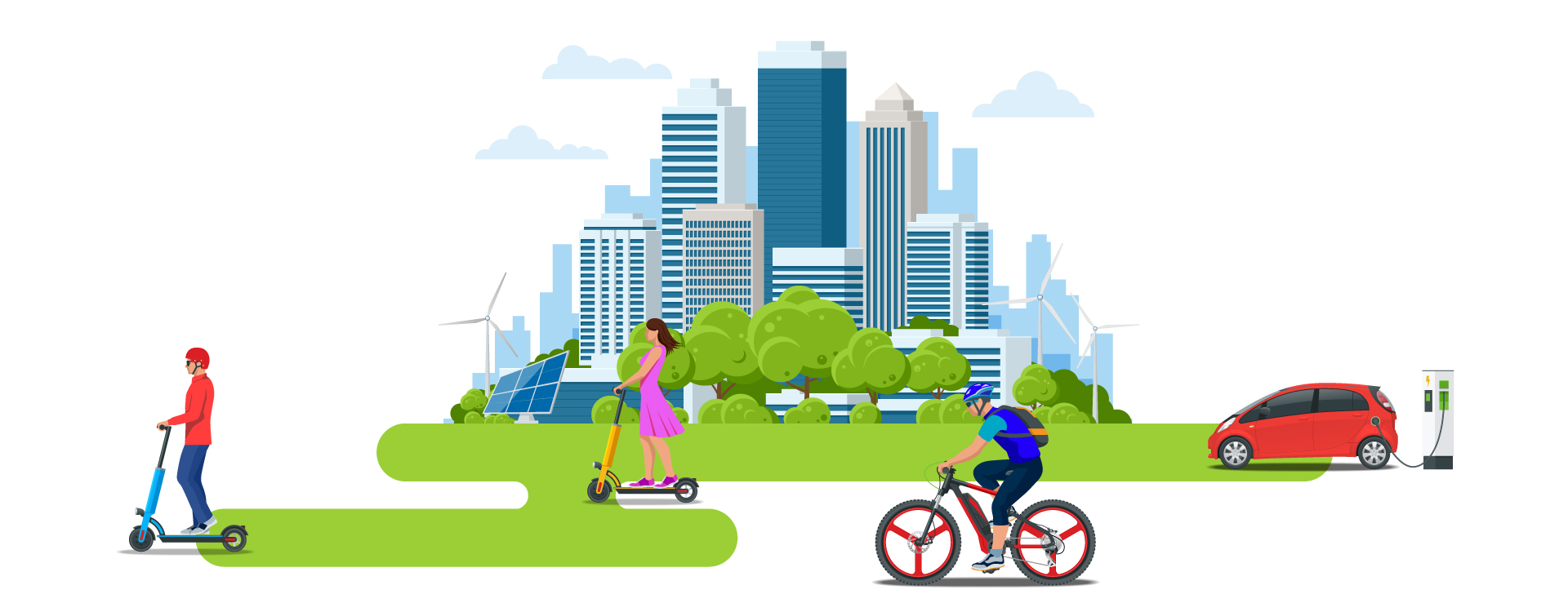
What is sustainable mobility?
The term sustainable mobility goes far beyond reducing emissions. The transport sector has the potential to improve the lives and livelihoods of billions of people. However, as well as meeting people’s needs today, the sector must be ready to respond to future generations’ expectations: this is the essence of sustainable development.
A range of innovative mobility trends, including shared mobility, and providing affordable and sustainable mobility options for people, can help achieve global sustainability goals.
Shared mobility can play a key role in reducing emissions as well as congestion. By sharing various modes of transport (cars, scooters, e-bikes) we can avoid owned vehicles standing idle for most of the day and optimise the use of vehicles by doing more with less. ‘NOwnership’, in which people do not own the means of transportation but pay per use,- has already started to change our habits, especially in urban areas.
According to research conducted by MIT on the benefits of shared mobility, this type of mobility could also reduce the occupation of parking spaces in cities by 86 per cent, freeing up precious public space and radically rethinking how space is used.
Improving the quality and quantity of public transport services is one of the most efficient ways of reducing both emissions and congestion. The real competitor of collective transport is individual transport, so it is crucial to offer services of good quality and high frequency.
Countries or cities that invest the most in public transport systems are also those with the highest shares of modal split. For example, a recent study showed that the availability of rail infrastructure and services has a direct influence on modal split and greenhouse gas emissions.
Digital technologies enable automated mobility and smart traffic management, making transport more efficient and thus reducing emissions. Intelligent transport systems will play a key role in making mobility more efficient on our roads, on the water and in the air.
For example, peer-to-peer, vehicle-to-vehicle, vehicle-to-infrastructure connectivity can support sustainable trip choices, allow for multimodal transport, improve access to public transport and reduce congestion as well as fuel consumption. Connectivity can optimise travel mode and route selection, improving traffic flow and reducing fuel consumption.
Automated vehicle control promises to improve energy efficiency, safety, and convenience. With each level of automation and improved connectivity, fuel consumption is reduced.
Sustainable mobility also includes the important notion of access to mobility, regardless of income or location.
Sustainable mobility includes equity in accessibility, with particular attention to more vulnerable groups of the population and geographical areas at risk of social exclusion.
Walking & cycling
The promotion of soft mobility is a simple way to reduce emissions and improve the quality of life, especially in urban areas.
Reducing emissions from every mode of transport
In parallel with increasing efficiency, ‘decarbonizing’ transport is vital. For around 200 years, we have relied on fossil sources to power transport. We need to shift to renewable sources, fast. This means a fundamental shift, and all solutions will be needed.
Learn more about EvCC Sustainability! www.everettcc.edu/green
Mariya Zelenskyy – Media and Outreach Coordinator sustainability@everettcc.edu
